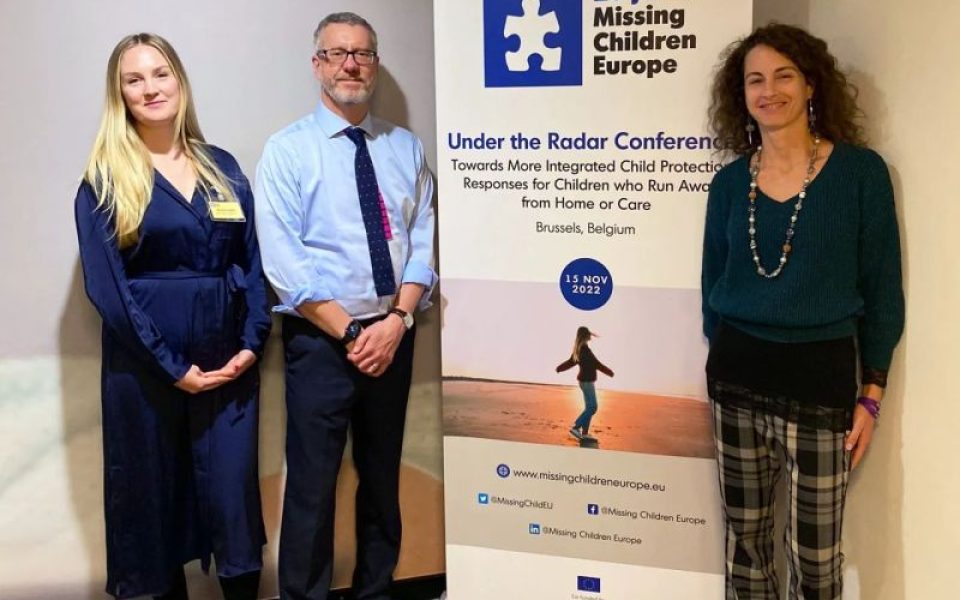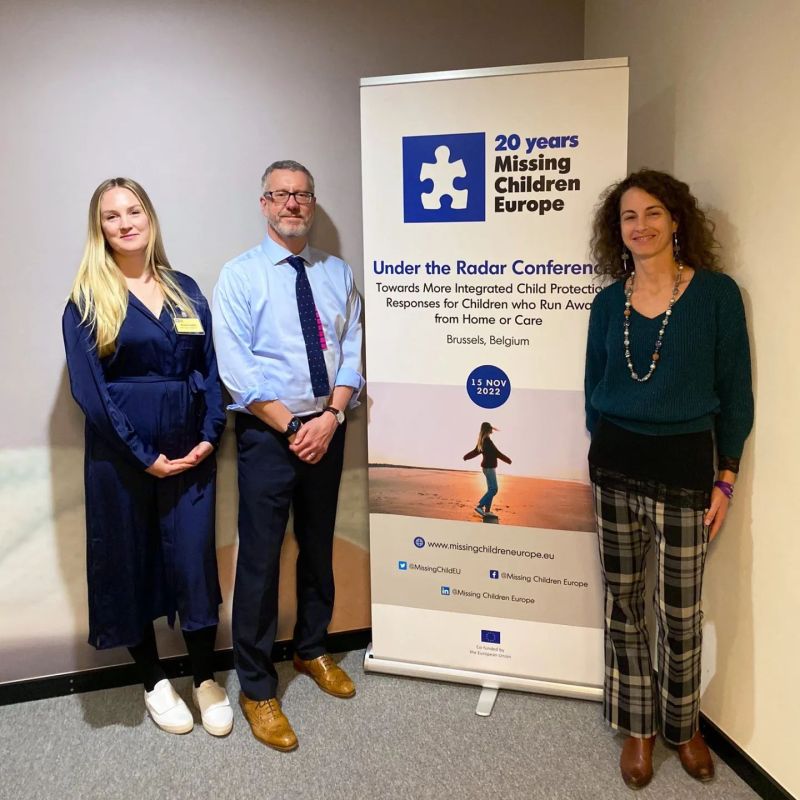Child helplines and children who run away

On 15 November 2022, our partner organisation Missing Children Europe celebrated its 20th anniversary and hosted the conference Under the Radar – Towards More Integrated Child Protection Responses for Children who Run Away from Home or Care.
I was kindly invited to share the perspectives of child helplines and child helpline data in the Plenary Session, Running Away as an Indicator of Adverse Childhood Experiences.
The main points from my presentation were:
- For almost half of contacts, the reason for contacting child helplines for children who run away is connected to violence.
- Child helpline data confirms the notion that running away must be addressed as a consequence of larger underlying issues, such as violence, family issues or mental health issues.
- The role of child helplines in providing early support around adverse childhood experiences, such as violence, to prevent children from running away, and providing support is essential.
We have also taken part in some important research through Missing Children Europe’s RADAR project – check out the full results here. You can find the detailed results here.
Child helpline data on runaways and the RADAR project research
Child helplines – and Child Helpline International – have been collecting data on children who run away for a long time, and we have focussed on data from 2019 relating to children who run away. Our annual data collection from 2019 shows that 22 out of 38 child helplines reported having contacts related to children who run away – 3,335 contacts.
However, we were not sure about the reasons behind why these children were running away. Therefore, we were excited to join Missing Children Europe’s RADAR project to be able to dive deeper into the reasons behind this. Eleven of our child helpline members took part in the research project, and through this research, several important points came to light in relation to adverse childhood experiences and the specific reasons why children run away.
Most notably, our child helpline data has shown that, in almost half of the contacts received from children and young people about running away, the main reason behind it has been exposure to violence. The prevalence of violence in the lived experiences of children who run away (47.7%) is much larger than across all children who contact child helplines (16.1%). Violence is a serious Adverse Childhood Experience (ACE), and I think we can all agree that we must all do as much as we can to prevent and protect children from violence.
Child helplines play an important role here. They are a low-threshold, child-friendly and confidential support and reporting mechanism for children – and often the first point of contact a child has with the child protection system.
Furthermore, we know that disclosure of violence is difficult for children, and as professionals we need to create safe and trusted spaces for children to express themselves in. The confidentiality of child helplines can help children build up the trust they need in order to disclose. Maybe it takes a few calls or chats, maybe even a couple of test calls for the child to feel that trust towards the child helpline counsellor. Child helplines give children this space and time needed, and often the method of communication required, as some children find it easier to write down instead of talk about difficult issues. Also – using the words of Dr. Warren Larkin, my fellow session speaker and expert in ACE – we need to ask about ACE if we want to find out. Child helplines have the skill to ask these questions in a child-friendly and sensitive way.
Child helplines also have an important role when it comes to referring children who run away to other support agencies. Our data shows that child helplines take further action 1 in every 4 times that a child or young person contacts a child helpline about running away. Child helplines are 42.6% more likely to take actions following contacts related to runaways than other concerns. Why? Because running away can pose immediate danger to the safety and wellbeing of the child. The role and expertise of missing children hotlines – using the 116 000 number – is essential here, to coordinate and ensure that children get home safe.
…And, let’s make sure we do whatever we can to prevent those situations from happening that make children feel like they need to run away!
Pictured, left to right: Ronja Ulvfot (Child Helpline International); Dr. Warren Larkin (Warren Larkin Associates Ltd); and Stefania Buoni (COMIP Italia).
